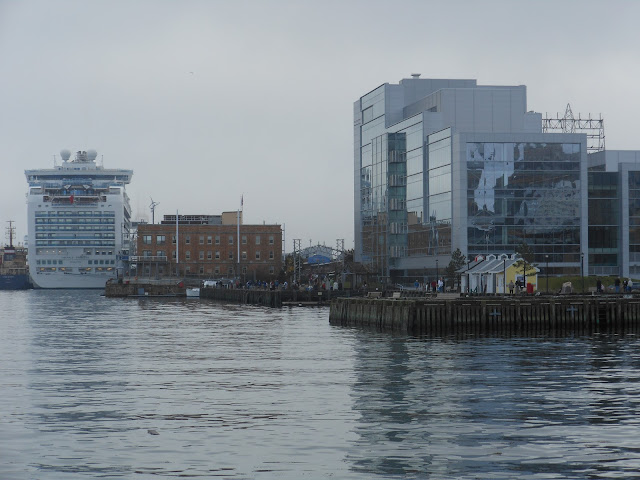While the area around Halifax has been inhabited by native
Mi'kmaq for millennia, modern Halifax was founded on June 21, 1749 as a British
military outpost. Easily defended and featuring the world's second largest
natural harbor, Halifax proved its worth during the Seven Years' War against
the French and later in the American Revolutionary War, and as the base grew in
size and importance, a significant population of merchants and other civilians
sprung up in its wake.
Halifax was a major naval port during World War I until half
the city was destroyed by the Halifax Explosion in 1917. The city was quickly
rebuilt after the explosion and World War II saw Halifax busier than ever, with
British supply convoys assembling to start their perilous journey across the
Atlantic as German U-boats lurked offshore. After the war, over a million
immigrants to Canada passed through Halifax.
 |
| George's Island Lighthouse |
Halifax is now a modern city of about 300,000. A resident of Halifax is called a
Haligonian. The local volkswalk club participates in the Dock and Walk program,
so we were able to start our 5k walk at the beautiful new cruise dock. We followed a walkway along the shoreline
past a farmer's market and the Pier 21 National Historic Site. We were able to see George's Island Lighthouse
in the harbor.
 |
| A park along the boardwalk |
 |
| Anchors at the Maritime Museum |
Following the boardwalk for about 2k, We passed the Maritime
Museum of the Atlantic, which houses several artifacts from the Titanic, including the Shoes of the
Unknown Child. The Museum also contains
exhibits pertaining to the Halifax Explosion.
Both of these incidents, along with the story of Halifax's role in the
9-11 events, are fascinating and merit thorough
descriptions, so I am going to include a separate blog post with those three
stories.
We continued along
the boardwalk past the ferry terminal to a group of buildings known as
"The Historic Properties."
Turning away from the shoreline, we headed uphill toward the Grand Parade where we caught a glimpse of the Town
Clock on Citadel Hill.
 |
| Do you feel like some Canadian food, eh? |
Our route
continued through a shopping and commercial district to the YMCA (where the
start box is located) across from the Public Gardens. We then retraced
our route through the commercial district back to the historic district and the
cruise terminal.
 |
| St. Mary's Basilica (Built between 1820 and 1899) |
I wish we'd had time to do the 10k walk, but our morning tour to Peggy's Cove (very worthwhile) ate into our time. Halifax has a lot to offer and we only scratched the surface. The boardwalk section was the best part of the walk. The leg from the library to the YMCA and back
was a little tedious. We felt that the
5k route was longer - perhaps 7k.
 |
| Anchoragites who frequent the Moose's Tooth might be intrigued by the Toothy Moose |
Walk Route: B+
Walk Instructions: B






No comments:
Post a Comment